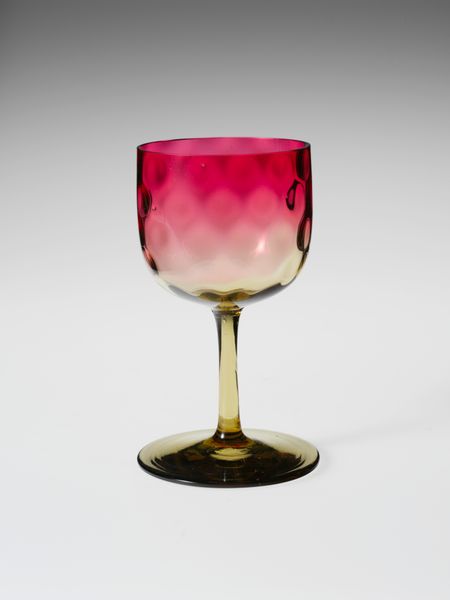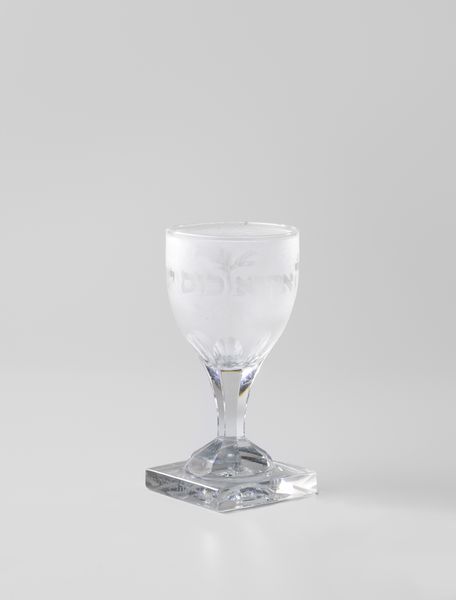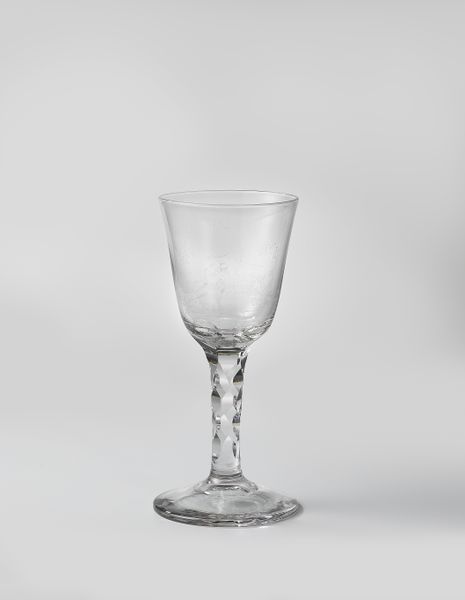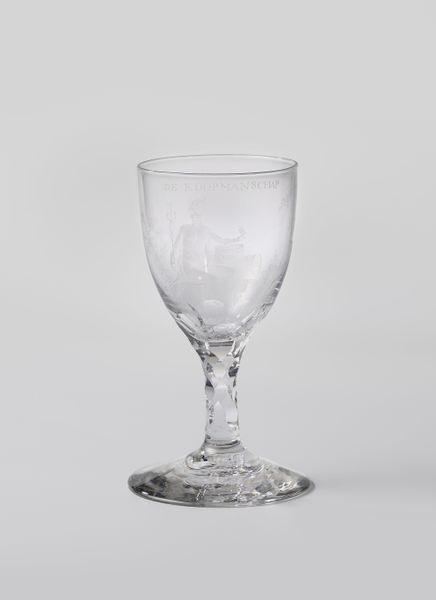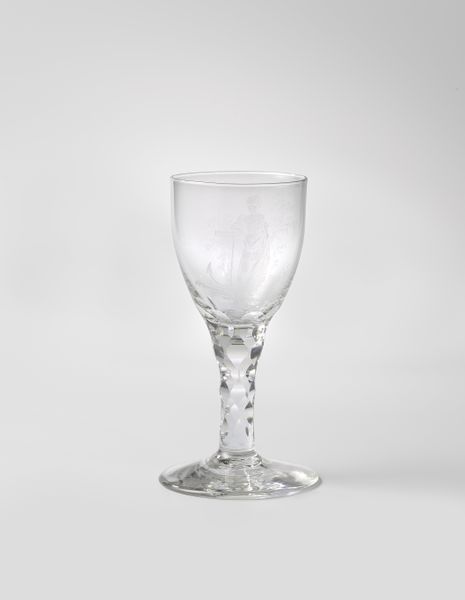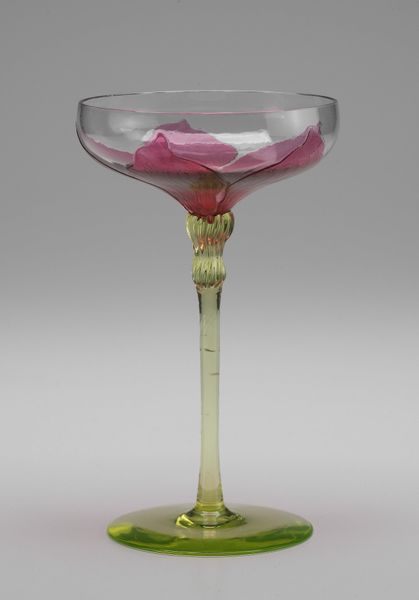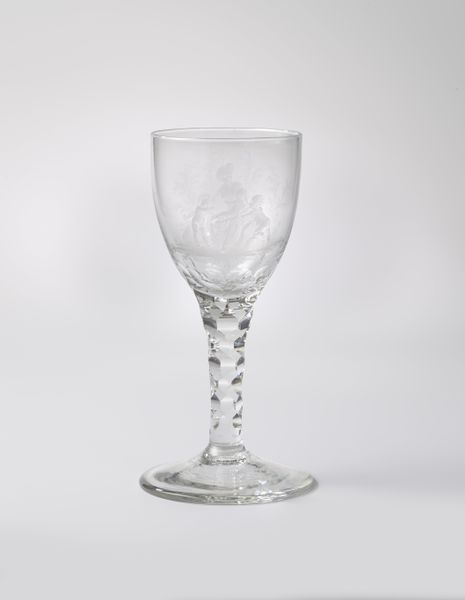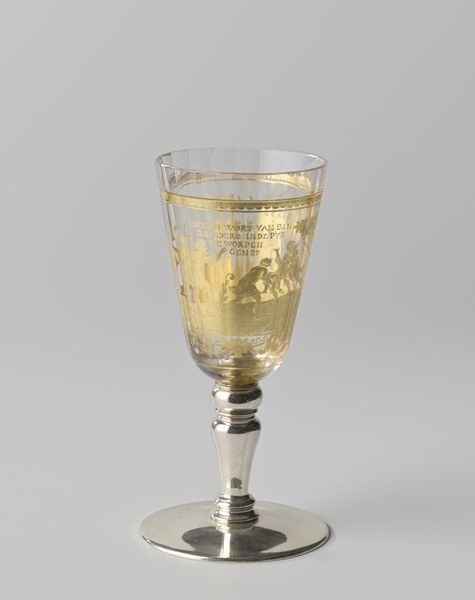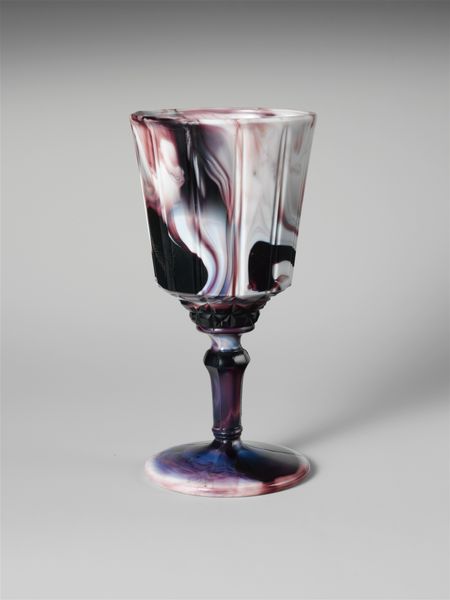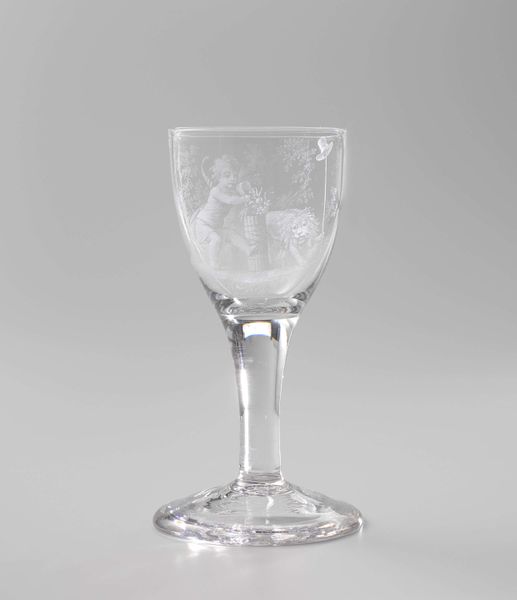
glass
#
studio photography
#
product photograph merchandise
#
advertising product shot
#
product studio photography
#
product fashion photography
#
lifestyle product photography
#
glass
#
metallic object render
#
united-states
#
graphic design product photography
#
product photography
#
decorative-art
#
3d rendered logo
Dimensions: H. 4 in. (10.2 cm)
Copyright: Public Domain
Editor: Here we have a “Wine Glass” made between 1882 and 1887 by Hobbs, Brockunier and Company, currently held at the Met. It's so delicate and pretty with those subtle gradients! What historical context informs this object's creation and how should we understand it today? Curator: The appeal is clear! Consider, though, the late 19th century as a period defined by rapid industrialization and the rise of consumer culture. Everyday objects, even something as simple as a wine glass, become signifiers of class, taste, and aspirations. Does this mass production and marketing impact your appreciation of its form and beauty? Editor: Absolutely! Knowing it’s from an era of mass production definitely complicates that initial impression of delicate uniqueness. I’m wondering, how might this seemingly simple object be considered within feminist or cultural studies frameworks? Curator: Excellent question. Think about the gendered nature of domestic spaces and rituals. Who was typically using this wine glass? What kind of social performance did it enable, and how did it reflect and reinforce gender roles within the Victorian household? Consider the ways in which the consumption of goods, like wine served in these glasses, was deeply entangled with displays of femininity and domesticity. What possibilities can you infer? Editor: So, it’s not just a pretty glass, it's also a silent participant in constructing and performing identity within specific societal constraints. Wow. I’ll never look at a decorative object the same way again. Curator: Exactly! By examining seemingly mundane objects through the lenses of identity, power, and social structure, we uncover deeper understandings about the forces shaping our past and present. I'm so pleased we could unravel just some of it together.
Comments
No comments
Be the first to comment and join the conversation on the ultimate creative platform.
